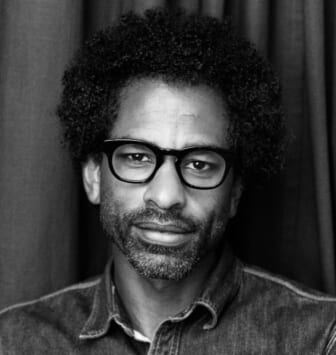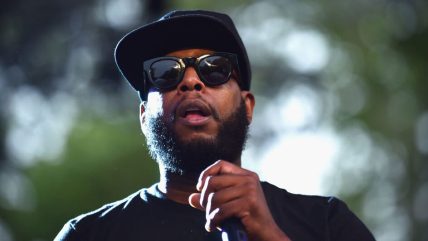The Tyre Nichols videos and the trauma of bearing witness
OPINION: I understand why many said they refuse to watch the videos. But what if you feel like you have to?
Editor’s note: The following article is an op-ed, and the views expressed are the author’s own. Read more opinions on theGrio.
There’s a lot of conversation about whether or not Black people should watch the Tyre Nichols videos. In the hours before authorities released the videos, I felt like we all were building up to the worst horror movie ever. I was scared about how I would feel if I saw it. Lots of Black people were then urging others to not watch it. “Protect your spirit,” they said. “Don’t put those videos into your memory alongside all the other videos of Black people being murdered by police.” For a lot of Black people, not watching them is the right decision. But I couldn’t do that.
I think white people should watch them because they need to know what the police do to us. But for many Black people, there was no need to watch because, in many ways, we’ve seen it before. And when we see these sorts of videos, we don’t watch them with a sense of detachment. We don’t see law enforcement killing strangers. We see kinfolk. More than that, we know that on another night, in another alley, it could be us or it could be someone we know and love surrounded by cops and blue lights with only cameras able to help us. When we watch a video and think, “That could be me, or that could be my family,” we experience what’s called “vicarious trauma.” It can also be called “linked fate.” Kia Gregory in the New Republic said: “In the African American community, individual life chances are recognized as inextricably tied to the race as a whole. So when black people watch a video of police violence against another black person, they see themselves or their loved ones in that person’s place, knowing that the same fateful encounter could very well happen to them.”
A 2018 Harvard study found that videos of police killings lead to lasting mental anguish. One of the study’s authors, David Williams, the chair of the department of social and behavioral sciences at the Harvard T.H. Chan School of Public Health, said, “We found that every police shooting of an unarmed Black person was linked to worse mental health for the entire Black population in the state where that shooting had occurred for the next three months.” Wow — every shooting of an unarmed Black person leads to widespread depression, anxiety, anger, and/or trauma for three months. I have known those feelings many times and have been in the midst of them when a new shooting and video popped up, retraumatizing me again. You’ve been there.
But I couldn’t turn away. I had to watch. I felt like I had to know what happened out there on those streets and what they did to that man, that father, that son, that photographer, that skateboarder. I couldn’t turn away. Perhaps I felt a duty to watch — how could I turn away from this brother? Maybe it was the last way I could help him, taking in that pain to launch me forward into the next battle. Perhaps I’m numb from having seen so many similar videos. I won’t describe the violence in the Tyre Nichols videos out of respect for those who have decided to not watch it, but I can say that the cops who did this are pathetic. Aside from the homicidal nature of their attack, they look like buffoons. In the videos, they pepper spray each other, they slip and fall, and despite surrounding him, the officers let him get away and outrun them. This can’t be an elite unit.
But most of the videos were really hard to watch. Afterwards, as it sunk in, I had to sit down and recenter myself. I just sat aimlessly for several hours feeling traumatized, depressed, despondent, angry, helpless. I texted 20 people, desperate for connection. I wanted to hug my son, but I didn’t want to alarm him, and besides, he was already asleep. But I could not help seeing the scene again and again in my mind, knowing it could have been me. It could one day be me. Or it could have been my son. Or it could one day be him. The following day, as I tried to go on while holding this giant ball of emotion inside me, I saw white people laughing and going through their normal day, unaffected by this pain that was eating at me and so many of my sisters and brothers. And I was angry at them for being able to walk around blissfully, while so many of us were in pain over these videos.
The video filled me with pain, and I can understand not watching it. You may be able to skip the pain. But I couldn’t. Black history and Black life is filled with so much pain and anger that it seems like part of the experience. People have long said Black joy is so powerful precisely because Black pain is so low. But I do hope to have the strength in the future to skip some of these videos. I don’t need to do this journey through racism-inspired trauma again. But, also, I don’t want to turn my back on the truth of what’s happening to my brothers at the hands of homicidal police. I’m trapped.

Touré is a host and Creative Director at theGrio. He is the host of the podcast “Toure Show” and the podcast docuseries “Who Was Prince?” He is also the author of seven books including the Prince biography Nothing Compares 2 U and the ebook The Ivy League Counterfeiter. Look out for his upcoming podcast Being Black In the 80s.
TheGrio is FREE on your TV via Apple TV, Amazon Fire, Roku, and Android TV. Please download theGrio mobile apps today!


